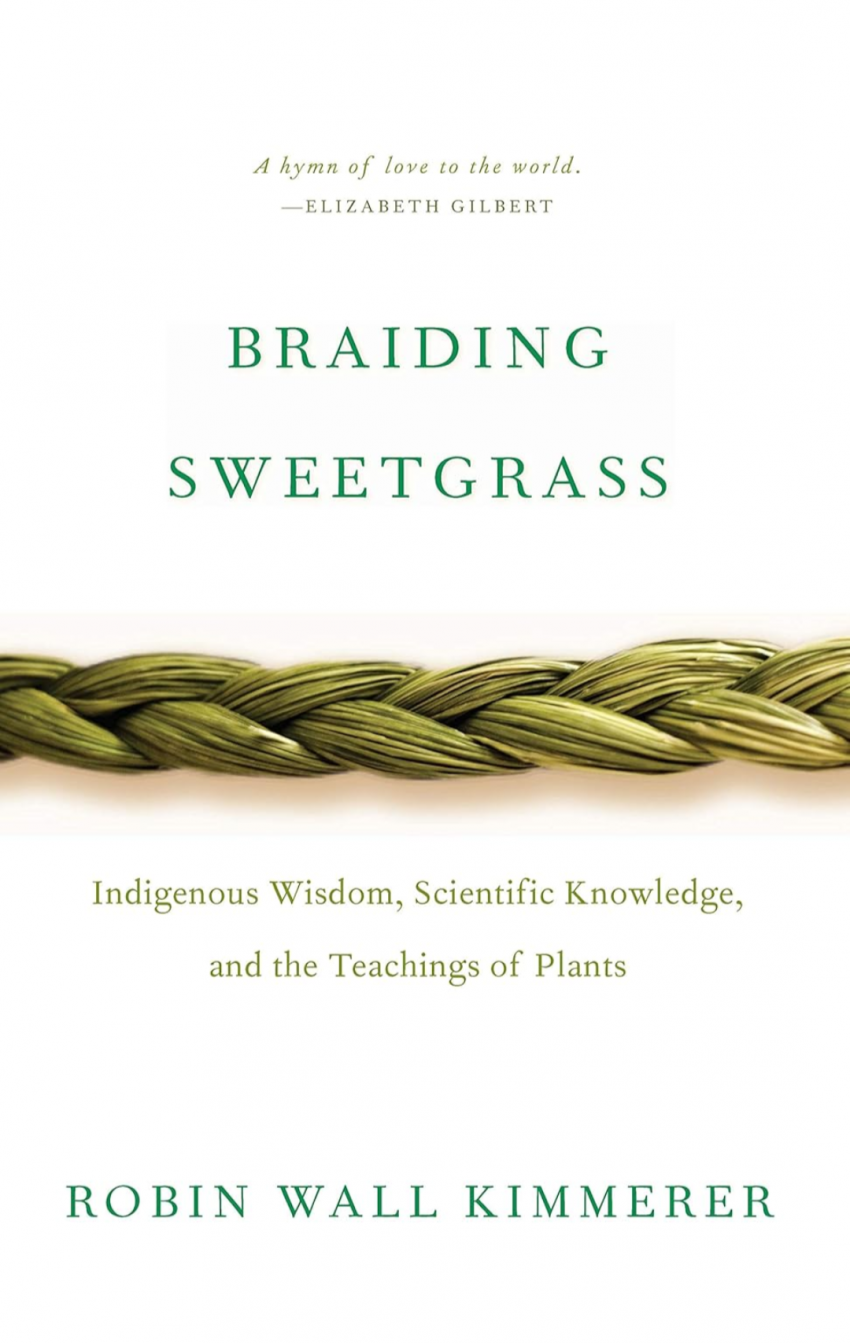Robin Wall Kimmerer’s “Braiding Sweetgrass: Indigenous Wisdom, Scientific Knowledge, and the Teachings of Plants” achieves something rare in environmental literature: it successfully bridges Western scientific methodology and Indigenous wisdom traditions, creating a tapestry of understanding that feels both urgent and timeless. As a botanist of Potawatomi heritage, Kimmerer brings unique authority to this synthesis, navigating between worldviews with genuine fluency rather than superficial appropriation.
The Sacred Science of Reciprocity
At the heart of Kimmerer’s vision lies reciprocity—the understanding that humans exist not as separate from nature but as participants in an intricate web of relationships. Through interconnected essays, she demonstrates how Indigenous knowledge systems offer profound insights into sustainable living that Western science is only beginning to validate.
The book’s scientific content remains both accessible and rigorous. Kimmerer’s discussions of the “wood wide web”—mycorrhizal networks connecting forest trees—demonstrate how Indigenous understanding of plant intelligence has long preceded Western scientific “discovery.” What makes these discussions compelling is how she contextualizes them within Indigenous worldviews. Sweetgrass becomes more than Hierochloe odorata; it transforms into a teacher about abundance, scarcity, and proper harvesting protocols.
Her exploration of language deserves special attention. Kimmerer contrasts English grammar that objectifies plants with Potawatomi grammar that recognizes them as beings, offering profound insights into how linguistic frameworks shape environmental attitudes. Her suggestion that we address plants as “someone” rather than “something” points toward fundamental shifts in consciousness necessary for ecological survival.
Memory, Landscape, and Cultural Resilience
The memoir elements woven throughout provide emotional depth to larger environmental arguments. Kimmerer’s account of her grandmother’s stories, her struggles to reclaim Potawatomi language, and experiences teaching her daughters about plant relationships create intimate connections between reader and landscape. These personal narratives demonstrate how cultural knowledge transmission works in Indigenous communities and why its loss represents spiritual crisis.
Her description of returning to ancestral lands degraded by industrial agriculture carries particular poignancy. Yet rather than dwelling in loss, Kimmerer focuses on restoration—both ecological and cultural. Her work with student crews restoring prairie ecosystems becomes metaphor for broader healing between humans and more-than-human beings.
Environmental Messaging with Nuanced Hope
Unlike environmental writing that relies on apocalyptic warnings, “Braiding Sweetgrass” offers hope grounded in practical wisdom. Kimmerer’s environmental messaging acknowledges ecological damage severity while maintaining faith in nature’s resilience and humanity’s capacity for transformation. She presents climate change and environmental degradation as symptoms of deeper spiritual crisis—the result of cultures that have forgotten reciprocal relationship with the natural world.
Her concept of the “grammar of animacy” provides powerful tools for environmental thinking. By exploring how Indigenous languages recognize different categories of beings, she challenges assumptions about consciousness, agency, and moral consideration in nature. This linguistic analysis supports expanded environmental ethics while remaining grounded in concrete cultural practices.
The Honorable Harvest—taking only what is needed, minimizing harm, being grateful, and giving back—provides practical frameworks for sustainable resource management that transcend cultural boundaries.
Literary Craft and Subtle Tensions
From a literary perspective, “Braiding Sweetgrass” demonstrates remarkable craft in its use of metaphor and structural innovation. The braiding metaphor works on multiple levels while the book’s circular structure mirrors Indigenous storytelling traditions. Each essay stands alone while contributing to larger arguments, reinforcing themes about interconnection.
However, the book occasionally reveals tensions inherent in translation work between Indigenous wisdom and Western academic discourse. While generally successful, moments of cultural interpretation sometimes feel constrained by English vocabulary and Western conceptual frameworks. The challenge becomes particularly apparent where Kimmerer attempts to serve both academic rigor and accessible storytelling, creating occasional disorientation as the text shifts between deeply personal narrative, botanical description, and philosophical reflection.
Impact and Cultural Significance
Since publication, “Braiding Sweetgrass” has achieved remarkable reach, suggesting hunger for environmental narratives offering more than crisis warnings. The book’s adoption in university curricula demonstrates its value as an educational text successfully integrating different ways of knowing. Kimmerer’s articulation of Indigenous ecological knowledge has contributed to growing recognition of traditional ecological knowledge in scientific and conservation circles.
Most significantly, the book models environmental writing that avoids both privileged detachment and overwhelming despair. By centering Indigenous knowledge while remaining accessible to diverse readers, it opens new possibilities for environmental discourse that is both scientifically grounded and culturally responsive.
Conclusion: The Gifts of Integration
“Braiding Sweetgrass” succeeds most powerfully in demonstrating that integrating Indigenous wisdom and Western science represents not just intellectual exercise but essential survival strategy. Kimmerer’s vision of reciprocal relationship offers concrete alternatives to extractive approaches to both knowledge and resources, suggesting that healing human-nature relationships requires fundamental shifts in consciousness and culture.
The book’s lasting contribution lies in its demonstration that different ways of knowing can be braided together without losing essential character. While tensions between academic and popular approaches occasionally surface, these moments ultimately underscore the importance of Kimmerer’s translation work. “Braiding Sweetgrass” stands as both literary achievement and essential environmental contribution—a book that changes how readers understand their place within the larger community of life, creating an environmental classic for the age of ecological awakening.
You can read an extended version of this review by who orting me at buymeacoffee.com/racheltsunoda/weaving-worlds-the-transformative-vision-braiding-sweetgrass

